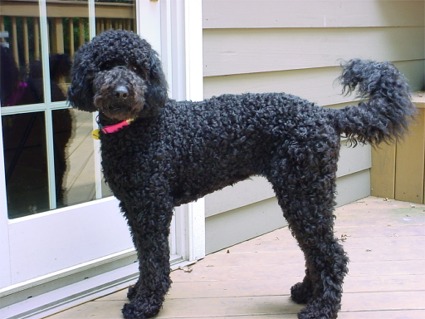Our pets age at a much quicker rate than we do. Smaller dogs (under 50lbs) are considered old when they reach nine to thirteen years of age. Seven to ten year old large dogs (50-90lbs) are considered geriatric, while extra large dogs (over 90lbs) reach the older stage between the ages of six and nine. When our dogs reach the geriatric stage of their life, we need to approach their health and care with a preventative mindset. Behavior, physical, and internal problems are three core trouble areas for older dogs.
Behavior. Often times you will notice changes in your geriatric dog’s behavior. Sometimes thought to be dementia, dogs with canine cognitive dysfunction show confusion in completing daily tasks. Signs for this illness include forgetting housetraining (which results in accidents in the house), forgetting habits such as when and where mealtimes are, and an increase or decrease in aggression. Vision and hearing loss prohibit your dog’s awareness of his surroundings which causes behavioral changes (for example, he may snap at you if he cannot hear your approach).
Physical. Physical changes in your geriatric dog include graying of the fur around the muzzle, a bluish haze in the pupil, muscle atrophy, and decreased appetite. You will easily notice the graying of fur and haze in the pupil. Inactivity in older dogs causes their muscles to weaken; often times arthritic pain is a factor in the decreased activity levels. Arthritis can cause your dog significant pain; however, using buffered aspirin and glucosamine, chondroitin and MSM can relieve the pain and help the body to repair the arthritic joints. It is important for your dog to get exercise; however, you should adjust the level and length of exercise so as not to cause pain or over exertion. Monitoring food intake, activity levels, and any physical changes in the body will help you to notice (and hopefully prevent) diseases in your dog. Any significant changes, such as too much sleep, problems going to the bathroom, or little to no food intake, should be discussed with your veterinarian.
Internal. While there are noticeable changes taking place on the outside, inside your dog’s body is also slowing down. As dogs get older they are more prone to a variety of diseases such as kidney, liver, thyroid disease, even diabetes and cancer. It’s a good idea to have your veterinarian perform routine blood tests to catch diseases earlier. The earlier they discover the disorder, the more that can be done to correct it. Also, your dog’s coat begins to look dull and the hair is more brittle as he ages. A good cure for this is fish oils, which helps to give your dog’s body the essential components to improve his skin and coat.








